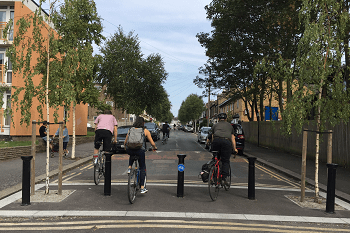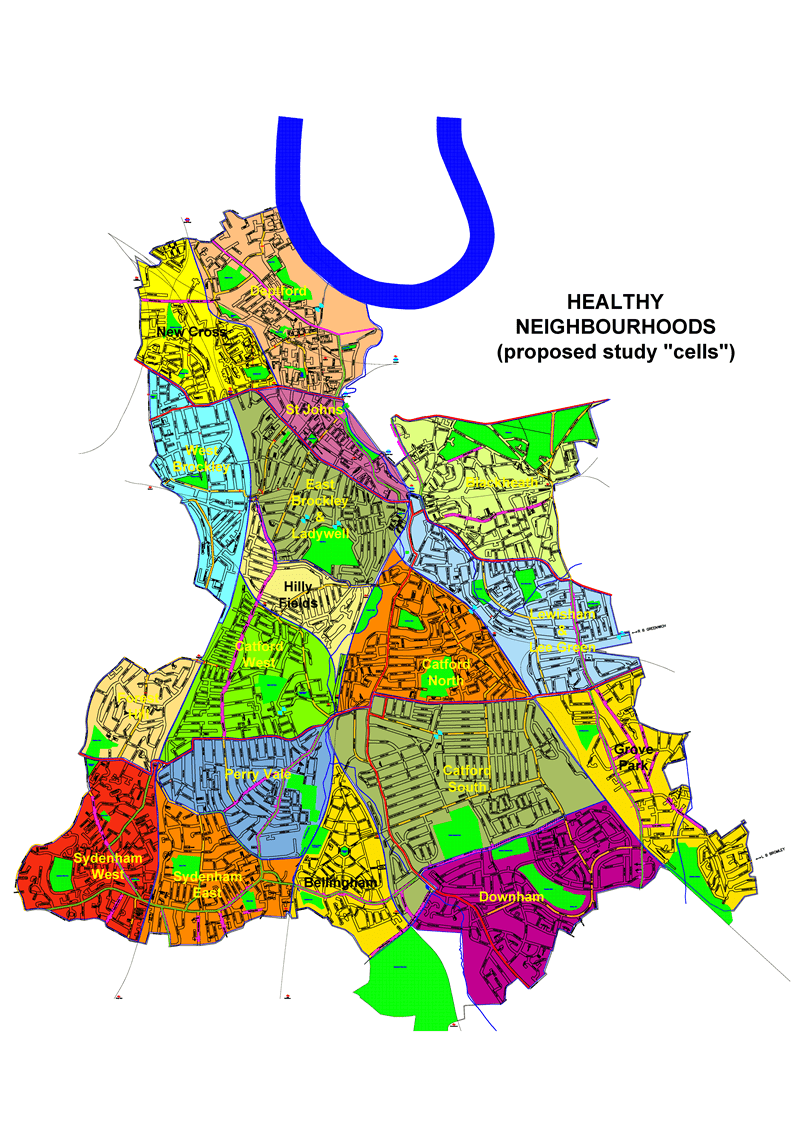Our traffic reduction programme (healthy neighbourhoods)
Reducing journeys by car
By 2041, we want 80% of all journeys in the borough to be made by sustainable modes of transport, such as walking, cycling and public transport. This is a key target for both the Mayor of London and our transport strategy.
To help us achieve this goal, we have adopted the Mayor of London’s Healthy Streets Approach. We will also:
- tackle congestion
- enhance air quality
- improve road safety.
This will help make our diverse communities greener and healthier, and will make the borough a more attractive place to live, work, play and do business.
What are healthy neighbourhoods?
Healthy neighbourhoods is a programme that will change our streets to encourage people to walk and cycle rather than drive. This is an aim set out in our transport strategy and local implementation plan 2019–2041 (LIP3).
The programme is likely to include the following package of measures, subject to availability of funding and public consultation:
- Traffic management measures including banned turns and modal filter installations that stop vehicles passing but allow pedestrians and cyclists through (pictured).
- Road closures outside schools during pick-up and drop-off times to address congestion and parking, encourage more active travel to school and improve air quality.
- Complementary measures such as:
- contra-flow cycling (cycling both ways along one-way streets)
- improved pedestrian crossing points
- secure cycle parking
- street trees
- benches
- electric vehicle charging points.
See a detailed list of FAQs about healthy neighbourhoods.
Using cars in a healthy neighbourhood
We understand that you may still want to own a car or be member of a car club. To make these car journeys more sustainable, we will encourage a shift to electric vehicles.
Healthy neighbourhood areas
We have split the borough into 18 areas – known as healthy networks (HN) – and will work on making about two of these healthy every year, subject to funding. The boundaries are based on key transport corridors, such as main roads and railway lines, rather than ward boundaries (see map below and click on the image to enlarge).
We have prioritised the first four areas using a number of factors, including:
- personal injury collisions
- air quality
- levels of obesity and deprivation
- the feedback from our borough-wide Commonplace consultation.
When the programme will start
The first four areas of the healthy neighbourhood programme will start in the following order:
- Lewisham and Lee Green – May 2019
- east Sydenham – June 2019
- Telegraph Hill (formerly referred to as west Brockley HN)
- Bellingham.
We will announce the phasing of the remaining areas once funding has been confirmed. Each healthy neighbourhood will follow a similar programme, with the launch of the project in each area staggered slightly.
The four stages of a healthy neighbourhood project
Stage 1. Community engagement and design
We will start a discussion with key stakeholders and members of the public so we can understand local traffic issues better and identify schemes to address them. We have appointed healthy street experts Sustrans to manage this process.
Throughout this stage, you can access an online portal and the StreetBuilder tool, which will allow you to interact with the project in an engaging and easy-to-understand way. You will have access to data on:
- traffic volumes
- speed
- rat-run routes.
The portal will also provide a toolkit of options that can be included in a healthy neighbourhood and regular progress updates.
Community engagement activities in each area will include:
- information letter drops to HN area residents
- resident access to the online portal and StreetBuilder tool
- online perception surveys
- pop-up surveys on local streets
- co-design workshops
We will provide HN updates:
- at local assembly meetings
- on social media
- on the HN portal.
Stage 2. A trial traffic reduction scheme
After Stage 1, we will put forward a proposed package of schemes for the area. These will consist of a number of traffic-management measures, such as road closures and banned turn, plus a set of complementary measures. We will announce this through:
- the online portal
- a public exhibition
- street notices
- letter drops.
We will trial and monitor the closures through a temporary traffic order for six to 18 months. In most cases, we will enforce this with temporary planters placed on the road, possibly with one fully built example to demonstrate what the eventual closure will look like. If necessary, the trial can be removed sooner than six months.
At the end of the trial period, Mayor and Cabinet will decide if we should make the closures permanent, and deliver the complementary measures.
One of the key objectives of the scheme is traffic reduction. This means that without the traffic management measures, the other complementary schemes are unlikely to be implemented. If this happens, we will divert funding to another area.
Stage 3. Construction
If the trial is successful, we will fully implement the scheme. Updates on the works programme will be available through the online portal.
Stage 4. Monitoring
We will monitor the changes comprehensively to make sure they are performing as intended and identify any problems. We will then do any necessary work to address the issues.
Our plans for the healthy neighbourhood scheme after the first four areas
We have committed three years of funding to the programme and intend to continue the programme after this, subject to continued funding.
The next healthy neighbourhood areas to be delivered
We have not yet decided which areas we will work on in the third year. Every neighbourhood outside the ones identified in years one and two have a chance to be selected.
We will re-run the prioritisation process that we used to identify the first four healthy neighbourhoods in autumn 2020, using the latest data for each neighbourhood.
How you can help to get your area selected
One of the categories we use to select prospective healthy neighbourhoods is local public support. The best ways to demonstrate local support are to:
- contact your local councillors asking for them to support a healthy neighbourhood in your area
- attend your local assembly meeting and ask to form a local healthy neighbourhood working group, so the local community can start to formulate ideas for your area
- contact the Healthy Neighbourhood Team on the details below to get advice on setting up the group
- complete the borough-wide consultation that will launch in 2020.
Contact the Healthy Neighbourhoods Team
If you have a question about the healthy neighbourhoods scheme in one of the four areas that we've prioritised, you can email us:
Contact
Lewisham and Lee Green Healthy Neighbourhood Team
Telegraph Hill Healthy Neighbourhood Team
East Sydenham Healthy Neighbourhood Team
Bellingham Healthy Neighbourhood Team
When the healthy neighbourhoods online portal goes live, you can use it to submit comments and feedback, as well as signing up to get healthy neighbourhoods news updates.
If you have questions about the scheme that don’t relate to the four areas above, email traffic@lewisham.gov.uk, or write to Transport department, Laurence House, Catford Road, SE6 4RU.

